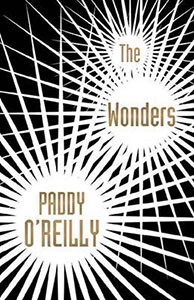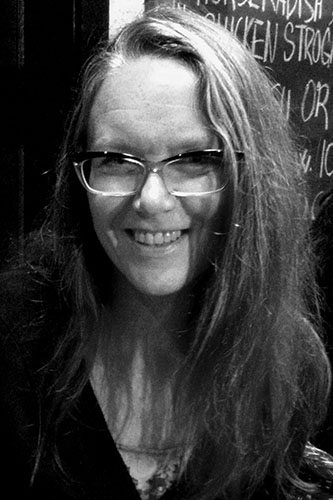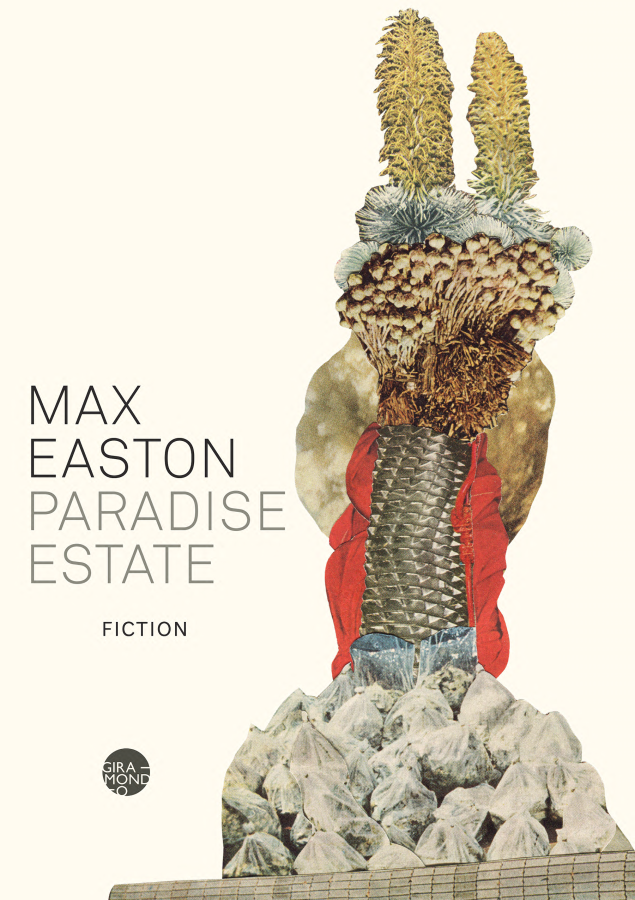Creature comforts: The Wonders by Paddy O’Reilly
‘What’s the point, what’s the point of it? What’s it got to do with anything? What’s the point of art?’ asks the George-Georgia character in Ali Smith’s How to be both (2014). My point in quoting from a novel that has little or no relation to Paddy O’Reilly’s The Wonders is that a work of fiction ought to be a revelation, an illumination, an education and, dare I say, ought to provoke a rapturous response. I quote it because How to be both is an eloquent, multilayered, and complex fiction about art and life – complex in the best sense of that word, when it is not misused as a synonym for ‘difficult’ or ‘obscure’ – and because the mere elaboration of a succession of points does not necessarily have much point.
The Wonders is an allegorical novel with worthy intentions. However, O’Reilly’s attempt to unpack a surfeit of twenty-first century issues – including animal welfare, human rights, the cult of celebrity, ecology, conservation, disability and gender politics – is marred by over-simplification and a tendency to parrot clichéd and prosaic opinions. Unlike her ambitious first novel, The Factory (2005), which experiments with narrative conventions and explores in depth the transcendent and transgressive nature of art and love, the humour and pathos of The Wonders seem predicated on sentiments with the widest possible appeal.
The novel is narrated in the third-person but assumes the perspective of Leon, a loner and a reader of self-help books, whose heart fails him at the age of 26. When his body rejects one donor heart and no other is readily available, Leon is forced into a literal life or death decision. He takes his chances with an experimental, illegal treatment, and returns a year later to an unnamed country town in Victoria, close to the goldfields where he grew up, with a mechanical heart implanted into his now open chest cavity. Not only has Leon’s physiology been radically altered; in the process, he has lost heart (the metaphor is implicit in the text), like ‘a monk who emerges from his solitary cell to find that over the years not only has he lost the knack for being in the world but his faith, the core of his being, has withered’.
As soon as the wider world learns of his condition, Leon is overwhelmed by unwanted attention and notoriety. He rejects the advances of opportunistic journalists and promoters until desperation drives him into the comforting arms of Rhona Bourke, who offers to make the freak Leon fears he has become ‘into a celebrity everyone loves’. Lonely Leon is ripe for the picking. Like the tornado that transports Dorothy to the land of Oz, Rhona whisks Leon off to Overington, her estate in Vermont, USA, a sanctuary for retired circus animals, where the novel’s three problematic creatures are to be groomed for super-stardom. Her talent is ‘to recognise what people desire and provide it for them’. The Wonders’ show, their talent, is to be a parade of what makes them more than human.
At Overington, Leon meets Kathryn, ‘an Irish woman whose gene therapy for Huntington’s had cured the Huntington’s but left her covered in wool’, and Christos, ‘a Greek performance artist who had somehow transplanted metal wings onto himself’. Kathryn’s woolly coat earns her the moniker ‘Lady Lamb’, which is intended as a compliment to her regal beauty, but is more evocative of slavish meekness. Her life has been blighted by her transformation: she has been exploited and abused. Her smart-mouthed ripostes and recently acquired self-confidence are a poor protection against obsessive males, whether adoring or hostile.
Christos is the only member of the trio in a relationship, and the only career performer. Like the artists Stelarc and Orlan, whose work focuses on body modification and testing the boundaries of plastic surgery, he has chosen his ‘deformity’. His belief that ‘the body should be the vehicle for creativity’ sits comfortably in the framework of contemporary art-practice, yet he chooses to align himself with the Rhona-roadshow and the other two unwitting victims of disease. He is willing to exploit any opportunity to fund his future operations. He is handsome, egotistical and exacting.
My first thought – that The Wonders might be a re-imagining of the classic children’s tale The Wonderful Wizard of Oz (1900), like Geoff Ryman’s inventive Was (1992) – came to little. O’Reilly’s eponymous Wonders bear only spurious resemblance to L. Frank Baum’s credulous Scarecrow, heartless Tin Woodman and Cowardly Lion. Yes, Leon’s name comes from ‘lion’ and he is timid, but his mechanical heart also invites comparison with the Tin Woodman; Christos is physically augmented like the Tin Woodman and metaphorically heartless in his self-obsession and materialism; and Kathryn acquires courage through adversity. They are all credulous and naïve to a degree, allowing themselves to be swept up in the schemes of their erstwhile saviour Rhona, who turns out to be less of a Dorothy and more like the humbug Oz.
But my comparisons faltered. Baum’s personifications are in search of what they already have – intelligence, love and courage – and are appealing because of their all-too-human foibles. The Wonders remain ciphers, subservient to the imperatives of O’Reilly’s polemic, even though two of them lack self-confidence at the beginning and all three long for a home of sorts. Issues of homosexuality, vegetarianism and immigration, for example, are attached to characters who serve as representatives of various disenfranchised minority groups, but whose point attracts little more than passing reference. Neither Christos’s homosexuality nor his relationship with Yuri, his lover and general dogsbody, influences the narrative to any perceptible degree. That Christos’ name, sexual orientation and Greek origin might be a sly nod to the author of The Slap (2008) only serves to reinforce The Wonders’ resemblance to a soap opera.
Yuri fulfills another representative function, but his ‘veganism, his cotton clothes and hemp sandals’ are summarily dealt with:
He belonged to the tribe that was afraid humans may have gone too far, that they had poisoned the planet beyond redemption, that they should show more respect to the animals and plants of the earth.
Leon might want to engage with Yuri in more depth, but Yuri and his issues fade conveniently from the text. Yuri always finds ‘a reason to slip away’.
Similarly, Dr Minh Trang, the Wonders’ live-in surgeon and the daughter of immigrants to California, supplies the novel with a story of racial discrimination and social ostracism. The neighbourhood children called her ‘stinky bin’, rhymes with Minh, because she and her parents worked long hours in a cousin’s dry-cleaning business. ‘Now all those white kids are working in shops and driving cabs, while we stinkies are lawyers and accountants and doctors’ is the trite outcome of Minh’s ‘typical’ first-generation American experience. Minh goes on to reassure Leon that he makes ‘being weird seem okay’.
Crucial points arrive as platitudes: ‘all humans embody a myriad of nature’s mistakes’; ‘you don’t have to have a hole in your chest to feel like a monster’, because we all sometimes feel ‘as if we’re different, wrong, imperfect’; and ‘we are all animals’. From this we are meant to extrapolate that we are all fabulous, damaged, wondrous creatures, which has the ring of a truism. It is the kind of banality espoused by self-help gurus. As an answer to the questions of what it means to be human and the nature of our responsibilities to ‘lesser’ creatures and to the planet, this barely scratches the surface of questions posed by scientists, philosophers and theologians for centuries.
The concept of humanity is put to the test by the Wonders’ physical alterations, by the invocation of the ‘less than human’ or ‘other than us’ tropes endemic to racism, and by the psychological challenges of the celebrity status they eventually attain. O’Reilly asks whether difference adds to or subtracts from being human; whether difference negates humanity. I am not even sure if this is a pertinent question. Perhaps it is meant as a metaphor for Australia’s treatment of refugees or our disregard of people with disability. Later Leon asks whether ‘the beautiful monsters’ make everything worse for the not so beautiful and the genuinely disabled. He finds an answer in the innocent gaze of children, for whom the grotesque, the malformed, the unexpected and the beautiful excite equal wonder – though I suspect that this sentiment, too, is more a matter of wishful thinking than reality.
Overington becomes a respite from public scrutiny for the Wonders. ‘It’s paradise for them here,’ says Rhona, referring to the five remaining circus animals, but tacitly including her human protégés. ‘The fences are to stop people getting in,’ she continues by way of excuse for the estate’s high security and razor-wired confines. By ascribing anthropomorphic characteristics to the animals – the chimpanzee is ‘good company’, despite occasionally leaving ‘a puckered turd in a corner of a room’; the bear ‘must be lonely, having been brought up in the company of humans’; the cry of a lonely elephant is ‘the saddest sound in the world’ – the humans are able to bond, or at least empathise, with their fellow inmates. ‘Elephants are very like us,’ says Rhona, hammering home the point after animal-identifying Kathryn has fled from the telling of a story of particular cruelty. The analogy between humans and animals is reinforced by the bestial characteristics ascribed to Kathryn.
The Wonders’ original and stage names serve to emphasise their symbolic function, rather than personalities. Kathryn, for example, means ‘pure’ and her stage name, ‘Lady Lamb’, must surely allude to the Lamb of God. The egotistical and exacting Christos belies the meaning of his given name (‘anointed’) and only resembles his stage-namesake, ‘Seraphiel’, in exterior beauty: in no sense is Christos’s personality angelic or dedicated to the glorification of God. The not-so-lionhearted Leon is nicknamed ‘Clockwork Man’; he worries whether this is a comment on his character or his organically heartless, mechanical state.
Leon is right to worry. Fame and fortune breed heartlessness, says O’Reilly, but before his change of heart Leon is seduced by the appurtenances of celebrity. The Wonders become a hit:
flickering presences in the lives of countless humans they would never meet … the topic of conversation across borders, across races, across classes, when they had done nothing but appear … And now they were hovering inches from the ground, already detached from the grubby earth trudged by ordinary people.
It takes Leon some time to discover that while celebrity may pander to ‘the human longing for mystery’, it also invokes ‘the ghosts of human discontent and envy’. Rhona’s promise to make each of the Wonders ‘into a celebrity everyone loves’ proves to be false: they become objects of both adulation and condemnation. Her promise that ‘they would be performers, not objects for passive exhibition’ also proves to be false: they do nothing but expose themselves. Her promise of wealth proves to be true, but does not prepare the Wonders for the power conferred by money. Leon, in particular, buys into the media’s sensationalised rhetoric about celebrity misdemeanours and imagines himself above the law:
He was famous and he could do things normal people could not … people with true fame have no limits on their behavior. Violence, rape, murder – celebrities never had to pay anything but a fine, or a few hours working at a community centre … the power of the world he would join overrode medical rules and regulations, overrode the courts and state, overrode everything.
Fame has the effect of untethering Leon and his fellow Wonders from reality. ‘They had drifted in a layer of high atmosphere, insulated in their private jets and penthouse rooms from the ordinary human world.’ According to O’Reilly’s precepts, this can only mean that they are no longer human. For the ‘unterhumans’, as Leon privately calls himself and his compatriots, sanctuary – from the Latin sanctus, ‘holy’ – is dependent on fulfilling Rhona’s ambitions, and her fulfillment depends on the reflected glory of the Wonders’ stardom. For all of them, wealth is the signature of success.
In How to be both, Ali Smith’s George-Georgia character asks directly:
Is worth the same as money? Are they the same thing? Is money who we are? Is it how much we make that makes us who we are? What does the word make mean? Are we what we make?
But the Wonders do not really make anything. Eventually Leon, and by default the reader, is given to understand that humanity is lost in the worship of Mammon:
Everything was about money … There were people who tried to make out that the value of human life was about god or justice or truth. But they relied on money to propagate their message. In the end, it was as though this medium of exchange had become a true organism: purposeful, amoral, determined to reproduce itself at any cost. And because humans made it, the cost rebounded on its maker … The cost of money was humanity.
The Wonders’ epigraph is a particularly mawkish quote from William Blake’s ‘The Lamb’. Used to underscore the sublime in the everyday, it also signals a quasi-religious basis to the novel’s questions about humanity and existence. Such literary references endow an otherwise superficial script with a semblance of gravitas, as do the operatic arias chosen to represent each of the Wonders during their performances. Pop music is too ephemeral, says Rhona. Even though she hates operatic wailing, she concedes that ‘there are some songs that make the tingle start in your tailbone’. Leon’s signature music is Dido’s ‘Lament’, from Henry Purcell’s Dido and Aeneas, the lyrics of which pander to conservative notions of grand tragedy. Kathryn’s aria is ‘Well, then? I’ll go far away’ from La Wally by Alfredo Catalani – the heroine’s death in an avalanche becoming analogous to Kathryn’s obliteration in the catastrophe of stardom. Christos’s ‘O Fortuna’, from Carmina Burana by Carl Orff, complains of ‘hateful life’ and monstrous fate, though in the Wonders’ case, the ‘monstrous fate’ is one of their own making.
O’Reilly’s text – from the Latin textus, ‘style or texture of a literary work’ – is unambiguous. The Wonders unfolds chronologically in 47 brief scenes, which include episodes devoted to the characters’ backstories in between the simple unrolling of the narrative. Possibly influenced by her work as a screenwriter, the texture of O’Reilly’s prose is straightforward, with only an occasional hyperbolic flourish. Leon’s first impression of Kathryn, for example, is not ameliorated by its necessity to the plot:
… he had never seen anything so desirable. She could have been a voluptuous showgirl zipped into a skin-tight costume of black astrakhan … Two bright pink penny nipples. Leon couldn’t understand exactly what it was about this hybrid creature that made her more womanly than a woman, but she was. She was luscious. And although he had never been religious, the word that came to mind was sinful.
When she lifted her leg to cross it in the armchair, the whole room was eclipsed by a glimpse of pink. Of course, she was naked. There was no wool down there. Leon groaned inside.
Christos throws Leon a cushion to cover his erection.
In this tasteless instance of objectification, Kathryn – significantly, the only female Wonder – becomes a ‘thing’ (an ‘anything’), no longer a person. Much is made of the superfluousness and discomfort of clothing for Kathryn, but to describe her genitals as eclipsing the room, and her nipples as bright pink pennies, speaks to an unwarranted degree of sexual commodification.
In his introduction to The Wonderful Wizard of Oz, Baum wrote that ‘modern education includes morality; therefore the modern child seeks only entertainment in its wonder tales and gladly dispenses with all disagreeable incident’. I suppose we must be post-modern children. Morality is no longer a part of our education, for we prefer our entertainment to be peppered with not just disagreeable, but gruesome incidents. We seem to prefer novels that pay lip service to righteous causes without unnecessarily disrupting our complacency, distractions that require little effort on our part.
There is nothing simple about being animal, human and humane. In The Wonders ‘human’ and ‘heart’ are intertwined – having heart, losing heart, heartlessness, heartache, heart as the repository of compassion and love, ‘heart’ literally and metaphorically. O’Reilly’s message is that ‘heart’ is the core of being human, and that humanity fails without heart.
But what is the point of being human, or as Leon asks:
What was the use of being a Wonder when after all the suffering, the surgery, the pain, the training, the struggle to become something more than human, you simply died like everyone else.
Certainly, celebrity did not live up to its hype for Leon. Perhaps he expected a reprieve from mortality. Far better to avoid that tragedy in a suitably romantic fade-out: eschew fame, get married, buy a property, grow things, notice the minutiae of existence, throw away the self-help manuals and live happily ever after. Never mind responsibility, let alone accountability. Yes indeed, I would agree that that sounds delightful were I not afraid that my irony be mistaken for sincerity.
References
L. Frank Baum, The Wonderful Wizard of Oz (University of Oxford Text Archive, 1900).
Ali Smith, How to be both (Hamish Hamilton, 2014).





